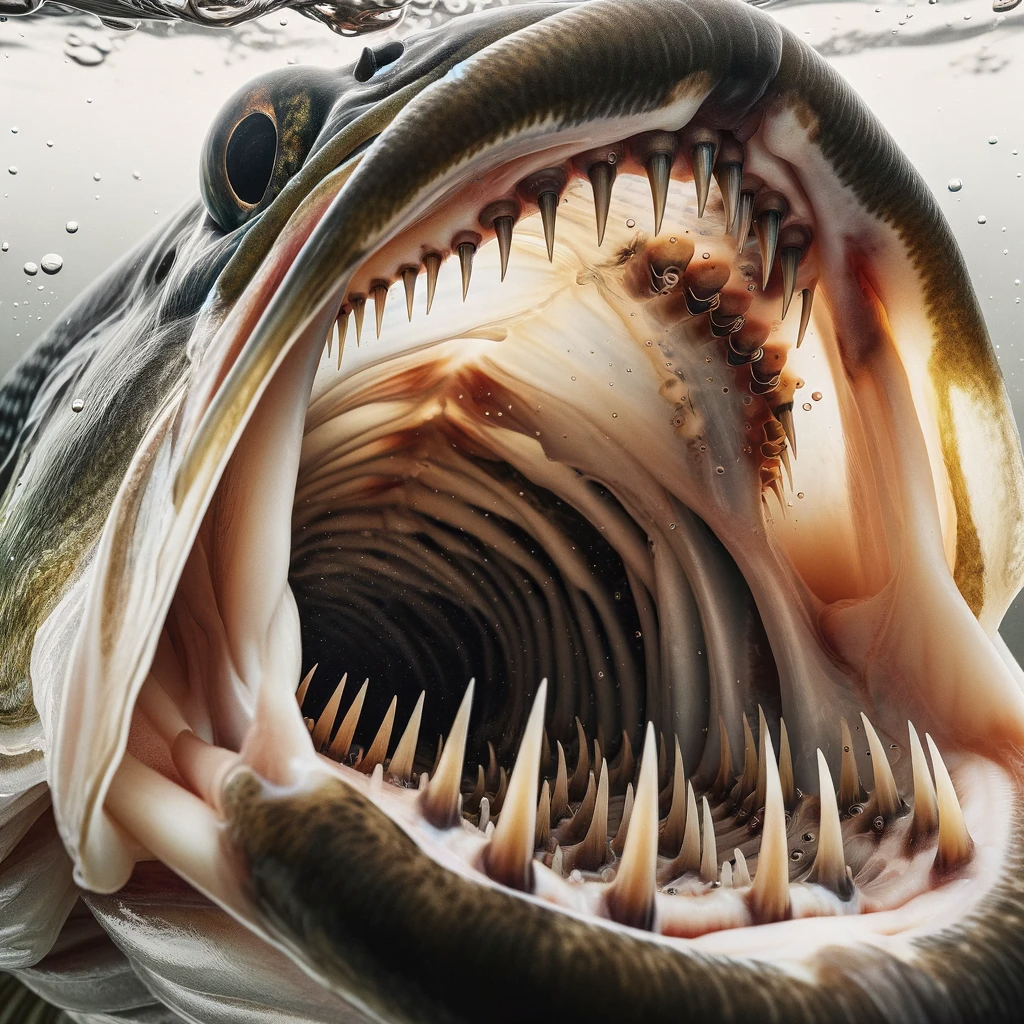Introduction
Picture this: you’re out on the water, the sun is just peeking over the horizon, and you feel a tug on your line. Moments later, you’re face-to-face with a largemouth bass, its mouth wide open, revealing a mysterious array of tiny, sharp teeth. It’s a sight that captivates and begs the question: just how many teeth does a largemouth bass have? This guide will not only answer that query but also delve into the fascinating dental dynamics of this popular game fish.
Understanding Largemouth Bass: An In-Depth Overview
The largemouth bass, a cornerstone species among freshwater fish enthusiasts, thrives in warm, vegetated waters across North America. With a reputation for their aggressive strikes and acrobatic jumps, they’re a favorite target for anglers seeking both sport and trophy catches.
Key Characteristics:
- Distinctive large mouth extending past the eyes
- Robust body shape, capable of explosive power
- Olive-green to greenish-gray coloration
The Dental Blueprint of a Largemouth Bass
Dive into the mouth of a largemouth bass, and you’ll discover a set of specialized tools for survival. These fish are equipped with numerous small, conical teeth, blanketing their jaws, tongue, and even the roof of their mouth. These inward-facing teeth ensure a firm grip on slippery prey, a testament to their evolution as apex predators in their domain.
Counting the Teeth: A Closer Look
It’s a challenging task to count each tooth in a largemouth bass’s mouth, given their size and the fact that they’re often replaced throughout the fish’s life. Estimates suggest hundreds of these tiny teeth line the mouth of a largemouth bass, constantly renewing to maintain their grip on prey.
The Functionality of Largemouth Bass Teeth
The teeth of a largemouth bass are not for chewing but are critical for their feeding strategy. They primarily feed on smaller fish, but their diet can also include frogs, crayfish, and even small birds or mammals that happen to cross their path. The teeth help them to catch and hold onto these various prey items until they can be swallowed whole.
Comparing Dentition: Largemouth Bass vs. Other Fish Species
When comparing the largemouth bass’s teeth to other species like the smallmouth bass, peacock bass, striped bass, or rock bass, we notice that each species has adapted their dentition to their specific dietary needs and hunting styles. For instance, the smallmouth bass, which often feeds on crayfish, has a slightly different tooth pattern to handle its preferred prey.
Myths and Misconceptions About Largemouth Bass Teeth
While some might believe that the teeth of a largemouth bass are dangerous, they are not typically a threat to humans. The concept of “bass thumb,” a type of abrasion caused by handling bass, is the most common minor injury an angler might experience. It’s easily preventable with the use of fishing gloves or thumb protectors.

Observing Largemouth Bass Teeth in the Wild
For anglers and nature enthusiasts interested in observing the teeth of a largemouth bass, it’s vital to practice humane fish handling. This includes supporting the fish’s body during a vertical hold and avoiding damage to the fish’s protective slime coat, which can be safeguarded by using silicon rubber nets during the catch and release process.
Largemouth Bass Dental Health and Conservation
The condition of a largemouth bass’s teeth can be an indicator of its overall health and the health of the ecosystem it inhabits. Clean waters and abundant prey contribute to strong dental health, which is essential for the bass to thrive. Conservationists and anglers alike play a role in promoting practices that ensure the sustainability of largemouth bass populations for future generations.
Fun Facts and Trivia
- The largemouth bass is capable of sucking in prey from a distance by creating a vacuum with a rapid opening of its mouth.
- Their teeth have a sandpaper-like texture, which is less about inflicting damage and more about preventing the escape of prey.
Conclusion
Exploring the world of largemouth bass teeth opens a window into the intricate balance of aquatic ecosystems. These fish are not just a challenge to catch but also a species that commands respect for their specialized adaptations. Understanding the role of their teeth can enhance our appreciation and encourage ethical angling practices.
FAQs
- How can I grip a bass properly to avoid harming it?
The best practice is to use a firm yet gentle grip on the lower jaw, supporting the fish’s body if you need to hold it horizontally. - What gear should I use to prevent abrasions from bass teeth?
Consider investing in a good pair of fishing gloves that provide grip and protection, and always handle the bass with care to minimize contact with their teeth. - Is it necessary to use specialty fishing lines when targeting largemouth bass?
Given the potential for wear from a bass’s teeth, using abrasion-resistant lines like braided line or fluorocarbon leaders can be beneficial.
By incorporating these insights and tips into your fishing adventures, you can enjoy the thrill of catching a largemouth bass while respecting and preserving this magnificent species. Whether you’re a seasoned angler or a curious novice, the world of bass fishing offers endless opportunities for learning and excitement. So next time you reel in a largemouth bass, take a moment to appreciate the intricate design of its teeth, a feature that’s as fascinating as it is functional in the wild waters they call home.




